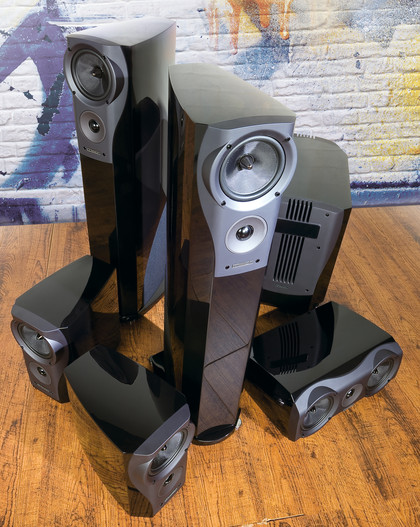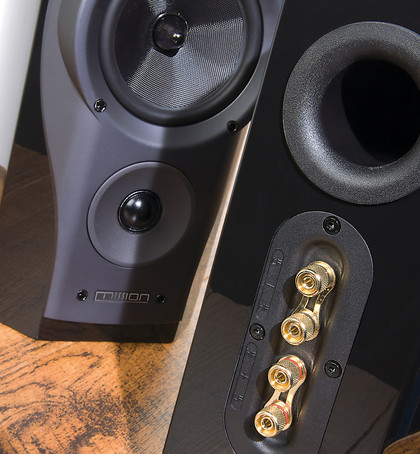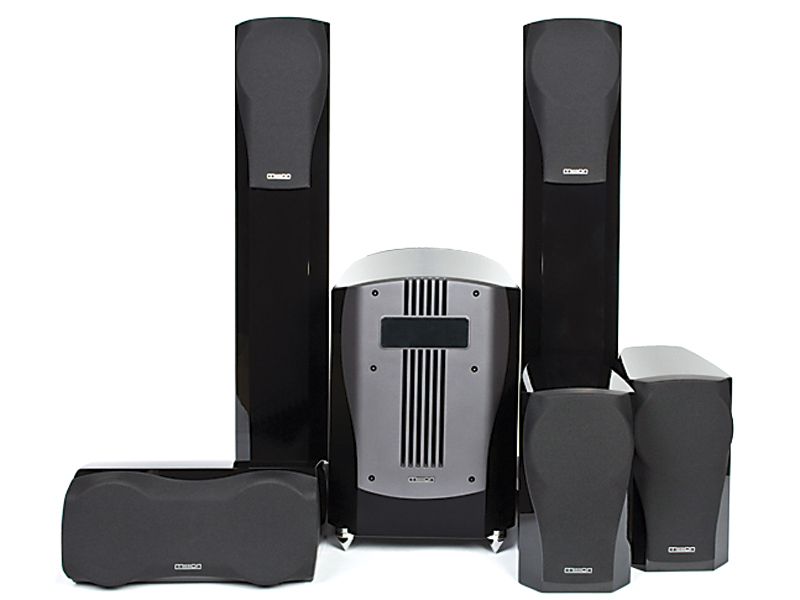TechRadar Verdict
Able to pick up on great detail in the sound it produces, this an excellent set of speakers
Pros
- +
Sophisticated and clean sounding
- +
Good stereo imagery
- +
Easy on the eye
Cons
- -
Not quite the most powerful, or deepest bass in its class
- -
Won't go super-loud
Why you can trust TechRadar
Mission doesn't introduce a new speaker range very often, so it was with excitement that I auditioned this 5.1 array culled from its recent 79 series.
These are currently the most ambitious and costly speakers available from the brand (apart from its Pilastro towers, which are a high-end one-off and aimed at affluent stereophiles). Yet, at under £2,400, I feel this system is far from overpriced.
For that money you get an array of cabinets that are strikingly designed – not always a phrase associated with loudspeakers. The enclosures are slim and faceted at the front, to encourage a broad spread of sound.
They make extensive use of curved panels, reducing internal symmetry and resonances, and the inverted drive unit layout makes it possible to use a shorter enclosure as the tweeter can be just below ear level.
Build quality is excellent, too. Three types and densities of wood are used in the construction, which helps reduce structural resonances thanks to mutual damping. The main side panels (top in the case of the centre speaker) have a multiply construction, which is an unusual elaboration.

BOOMING: With the grilles removed, these Missions look like they mean business
There are three finishes available: black (pictured here) or white gloss, and a rosewood option for those who prefer something more closely associated with trees. The plain finishes are applied in seven layers, each of which is rubbed down before the next is applied, the result being a deep, attractive gloss you can see your reflection in.
New drive units
Mission has crafted new drive units for its 79 series. Mainstay of the whole range, subwoofer apart, is a tweeter with an ultra-lightweight impregnated textile dome.
The unit is fitted with powerful rare earth magnets, and decoupled from the speaker enclosures using something Mission calls 'closed-cell gasketing', though the brand fails to explain how exactly it works in its literature. The bass drivers use a recently-developed resin-cured fibre cone material which is low in weight, and high in strength.
The front floorstanding speakers are the most unusual, as they also have a side-firing bass unit. The enclosures are built in mirror-image pairs, so you can chose whether the side-firing driver faces inwards or outwards. You can decide which by trial and error, but the former is preferred in most rooms.

ONE VOICE: The rears, centre and front speakers share the same midrange and tweeter design
The subwoofer is fairly conventional in layout, with a downward-facing driver that makes positioning not very critical. Unusually, however, it uses a Class AB amplifier, rather than a digital amp, the cheap and easy expedient preferred by many designers. Phase, level and crossover settings are readily accessible, and can be operated by remote control, making it almost too easy to mess up the internal settings.
